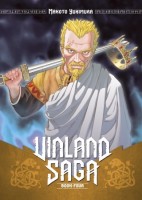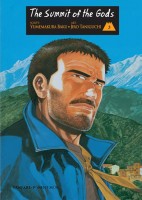 Creator: Hiroaki Samura
Creator: Hiroaki Samura
U.S. publisher: Dark Horse
ISBN: 9781616554842
Released: October 2014
Original release: 2012
Awards: Eisner Award, Japan Media Arts Award
Vigilance is the thirtieth and penultimate volume in the English-language edition of Blade of the Immortal, the long-running and award-winning manga series by Hiroaki Samura. In Japan, the series was only thirty volumes long, but due to slight differences in how the manga was released early on in its English-language run, Dark Horse’s edition of consists of thirty-one volumes. Vigilance, published in 2014, is equivalent to the twenty-ninth volume of the series’ Japanese edition originally released in 2012. Blade of the Immortal is a series that has particular significance for me. It was one of the very first manga that I ever read and it was one of the first series that I decided to collect in its entirety. I have been reading and collecting Blade of the Immortal for years now. The previous volume, Beyond Good and Evil, marked the beginning of the series’ end and Vigilance brings it that much closer. I was very curious to see how Samura would continue to advance the series.
The final confrontation between the remnants of Anotsu Kagehisa’s Ittō-ryū and Habaki Kagimura’s Rokki-dan has begun. Numerous casualties have been incurred by each side and countless innocent lives have been caught in the fray as the two groups try to destroy each other. At one point they were fighting for their ideals—Anotsu striving to restore martial glory and the way of the sword to Japan while Habaki worked to prevent that from happening in order to maintain the dominance of the shogunate—but now they are fighting simply to survive long enough to crush the other. Even if they are successful in killing their foes they may not live to see the fruits of their victory. Habaki is challenging Anotsu head on while the Ittō-ryū’s strongest fighter, Makie, is left to face multiple opponents under Habaki’s direct command despite her failing health. And on the periphery of this all, Manji and Rin stand against one of Habaki’s most imposing men even though they, too, seek Anotsu’s demise.
At this point in Blade of the Immortal the series’ story is drawing very close to its ultimate conclusion. There is very little plot development in Vigilance, and there doesn’t need to be; the series has been building up to these final volumes. Instead, the focus of Vigilance is on the deadly battles currently in progress. Samura’s artwork has always been dynamic in Blade of the Immortal, conveying a tremendous sense of movement and drama, but the action sequences and fight choreography in Vigilance may very well be some of the series’ best. Makie’s fight against an entire team of adversaries is particularly impressive and breathtaking. Her talent is astounding and on full display. She is constantly in motion, with an acute awareness of her surroundings, using both her weapon and her body in tangent to strike and defend. While she may not have the brute strength that so many of the other fighters in Blade of the Immortal possess, her agility and martial skill far surpass any of them.
The other two battles being simultaneously waged in Vigilance are also well-developed and each has a different feel than Makie’s. Manji’s style of fighting has come to rely very heavily on his near-immortality, leading him to attempt feats that would otherwise be unthinkable. He is also able to put to good use in some rather curious ways the bizarre regenerative powers of his body. The manga’s horror elements are readily apparent in his fight. There’s even a hearkening back to the death mandalas of the early series, which is a particularly nice touch. The confrontation between Anotsu and Habaki is different still. Like all of the other fighters who have managed to survive this long they are both exceptionally skilled swordsmen, however tactics and strategy play a much more prominent role in their death match. The way they fight is both intelligent and refined. Manji, Rin, Makie, Anotsu, and Habaki are now locked into their final battles. It will be very interesting to see exactly how things will turn out in the series’ conclusion, Final Curtain.




